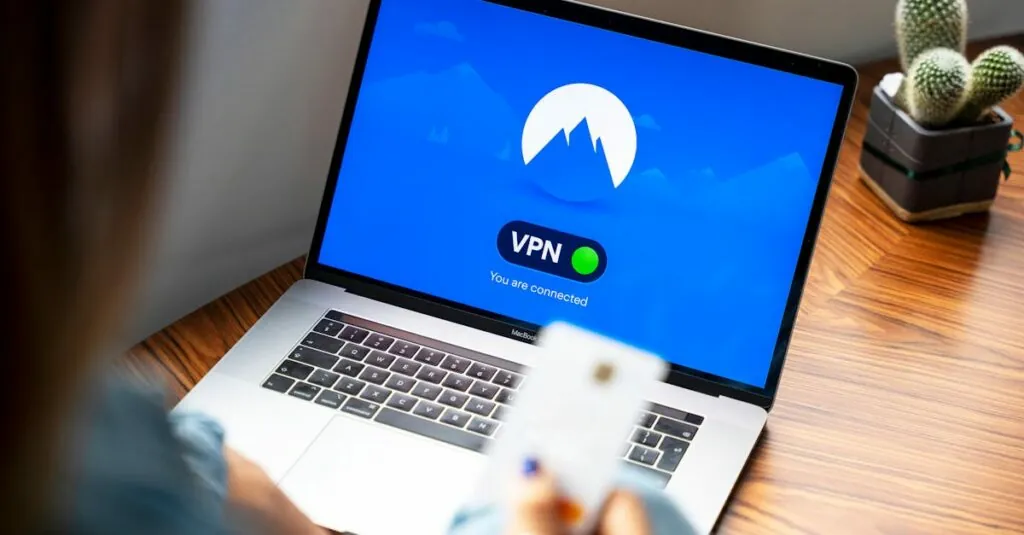Table of Contents
ToggleWhen it comes to smartphones, Apple knows how to keep everyone on their toes. The iPhone 13 and iPhone 14 might look like siblings at a family reunion, but dig a little deeper and you’ll find some interesting differences. Is it just a fresh coat of paint, or does the iPhone 14 pack some serious upgrades that’ll make you want to toss your iPhone 13 out the window?
Overview of iPhone Models
The iPhone 13 and iPhone 14 represent two significant releases from Apple. Both models feature a sleek design and a powerful chip, but key differences exist.
iPhone 13 includes the A15 Bionic chip, while iPhone 14 upgrades to a more advanced A16 Bionic chip. Users notice improved processing speeds and graphics performance in iPhone 14 due to this technology.
Display quality remains impressive in both models. iPhone 13 has a 6.1-inch Super Retina XDR display with a resolution of 2532 x 1170 pixels. In contrast, iPhone 14 maintains a similar size but offers enhanced brightness and color accuracy.
Camera capabilities also show marked distinctions. iPhone 13 boasts a dual-camera setup with 12 MP wide and ultra-wide lenses. iPhone 14, however, introduces advanced photographic features, including improved low-light performance and new software enhancements.
Battery life is essential for many users. iPhone 13 typically delivers up to 19 hours of video playback. Comparatively, iPhone 14 provides longer battery life, reaching approximately 20 hours of similar usage.
Connectivity options have evolved as well. iPhone 13 supports 5G, while iPhone 14 integrates more frequency bands, enhancing compatibility in various regions. This change benefits users who travel frequently.
In terms of base storage, iPhone 13 starts at 128 GB and offers options up to 512 GB. Conversely, iPhone 14 begins at 128 GB but goes up to 1 TB, accommodating users with larger storage needs.
Each model presents specific features appealing to different types of users. While iPhone 13 meets the needs of many, iPhone 14 offers substantial improvements ideal for those seeking the latest technology.
Design Comparison
The iPhone 13 and iPhone 14 showcase distinct design elements that reflect their respective generations. Apple’s aesthetic remains consistent, but several differences are apparent.
Size and Weight Differences
iPhone 14 measures 5.78 inches in height, 2.82 inches in width, and 0.31 inches in depth. Slightly larger dimensions enhance the overall screen experience. Weighing 6.06 ounces, it feels marginally heavier than its predecessor. The iPhone 13 also features similar measurements, but it weighs 5.78 ounces. Those considering portability may notice this difference, especially when evaluating both devices for everyday use.
Color Options
Choices in color highlight the iPhone 14’s vibrant palette, including starlight, midnight, blue, purple, and product red. A new shade of purple adds a refreshing touch for users seeking unique styles. iPhone 13 offers a more limited selection with colors like starlight, midnight, blue, pink, green, and product red. Both models maintain a premium finish, yet the design variations cater to personal preferences.
Display Features
Display features distinguish the iPhone 13 and iPhone 14. While both devices deliver impressive visuals, the iPhone 14 enhances user experience with significant improvements.
Screen Technology
Super Retina XDR technology excels in both models, offering OLED displays that provide deep blacks and vibrant colors. The iPhone 14 has an advanced version of this display, enabling better color accuracy and contrast. Innovations like HDR support enhance viewing experiences, making content more immersive. Both devices support True Tone, adjusting white balance for natural-looking colors in various lighting conditions.
Brightness and Resolution
Brightness levels set the iPhone 14 apart with a peak brightness of 2,000 nits outdoors, compared to the iPhone 13’s 1,200 nits. Enhanced brightness allows for visibility even in direct sunlight. Resolution remains consistent at 2532 x 1170 pixels for both. However, the iPhone 14’s adaptive refresh rate optimizes scroll speed and responsiveness. Users will notice smoother animations and improved touch response, contributing to an overall superior display experience.
Performance Analysis
The performance differences between the iPhone 13 and iPhone 14 showcase significant advancements. Apple focused on refining capabilities, enhancing the user experience.
Processor Upgrades
The iPhone 14 incorporates the A16 Bionic chip, delivering superior processing speeds compared to the iPhone 13’s A15 Bionic chip. Performance gains include faster graphics rendering that enhances gaming and app performance. This boost ensures smoother multitasking, making the iPhone 14 remarkably responsive in demanding scenarios. Benchmark tests consistently illustrate the A16 chip’s efficiency, handling tasks with less energy consumption.
RAM and Storage Variations
In terms of RAM, the iPhone 14 maintains a similar configuration, offering 6 GB across both models. However, storage options diverge significantly. Users find expanded choices with the iPhone 14, offering capacities of 128 GB, 256 GB, 512 GB, and up to 1 TB. The 1 TB option in iPhone 14 accommodates greater data storage needs, appealing to those who require substantial space for apps, photos, and videos. Meanwhile, the iPhone 13 peaks at 512 GB, limiting users looking for more extensive storage capabilities.
Camera Enhancements
Both the iPhone 13 and iPhone 14 feature impressive camera systems, but advancements in the iPhone 14 elevate photography significantly.
Camera Specifications
The iPhone 14 offers notable improvements in camera specifications, including a 12 MP main camera with a wider aperture of f/1.5, enhancing low-light performance. Comparatively, the iPhone 13’s main camera operates with an f/1.6 aperture. The ultra-wide camera on both models stands at 12 MP, yet the iPhone 14 enables better edge-to-edge clarity. Notably, the iPhone 14 supports enhanced Night mode capabilities across both its cameras, resulting in sharper images under challenging lighting conditions.
Photography Features
Photography features in the iPhone 14 enhance creativity and ease of use. Photonic Engine, exclusive to the iPhone 14, optimizes image processing, improving detail and color accuracy. This feature enhances the quality of both Night mode and Deep Fusion images. Additionally, Action mode provides excellent stabilizing effects for video, minimizing motion blur. Users of the iPhone 14 enjoy improved Smart HDR 4, adjusting lighting and contrast for different subjects within the same frame, while the iPhone 13 supports previous HDR iterations without this enhancement.
Battery Life and Charging
Battery life represents a key difference between the iPhone 13 and iPhone 14. The iPhone 14 excels with up to 20 hours of video playback while the iPhone 13 provides up to 19 hours. This slight increase stems from enhancements in the A16 Bionic chip and energy optimization features. Users can expect slightly longer use before reaching for the charger with the newer model.
Battery Capacity
Battery capacity reveals another distinction. The iPhone 13 houses a battery with a capacity of 3,240 mAh. In contrast, the iPhone 14 features an improved battery of 3,279 mAh. This increase in capacity contributes to better overall performance, allowing users to enjoy extended usage during daily activities.
Charging Technologies
Charging technologies showcase further upgrades. Both models offer MagSafe charging, but the iPhone 14 supports up to 20W wired charging, delivering faster power replenishment. Moreover, it maintains compatibility with Qi wireless charging, providing flexibility in charging options. Users appreciate the efficiency and convenience of these charging technologies, especially when time is of the essence.
Software and Features
The software and features in the iPhone 13 and iPhone 14 reflect advancements in technology and user experience.
iOS Updates
Both models run iOS 16, but the iPhone 14 benefits from exclusive optimizations. Users of the iPhone 14 access enhanced privacy features and improved notifications. New widgets improve home screen customization, offering a more personalized experience. Additionally, security updates occur regularly, maintaining user data safety across both devices.
Exclusive Features in iPhone 14
Several exclusive features set the iPhone 14 apart from its predecessor. Photonic Engine enhances image processing, resulting in superior low-light photography. Action mode provides video stabilization, revolutionizing outdoor shooting. Enhanced Smart HDR 4 optimizes lighting and contrast, adapting to various scenes effortlessly. Users particularly appreciate these innovations for capturing professional-quality images and videos.
Pricing and Availability
The pricing structures of the iPhone 13 and iPhone 14 reflect their distinct features and advancements. The iPhone 13 starts at $699 for the 128 GB model, while the iPhone 14 begins at $799 for the same storage capacity. Each model’s price varies based on storage options, with the iPhone 14 offering greater choices.
Availability differs between the two models as well. The iPhone 13 remains widely available through major retailers and online platforms, ensuring easy access for consumers. The introduction of the iPhone 14 means that some stores may prioritize the newest model, potentially leading to limited stock for the iPhone 13.
In terms of promotions, various carriers and retailers provide discounts on both models. Discounts for older models can appeal to budget-conscious buyers. Some carriers may offer trade-in options, helping users save on the purchase of the iPhone 14, further enhancing its attractiveness.
Pre-orders for the iPhone 14 started shortly after its launch announcement, generating high demand for the new features. Traditionally, Apple products see significant consumer interest during new releases, potentially causing stock fluctuations shortly after launch.
Analyzing the long-term pricing strategy reveals that the iPhone 14 may retain value better than the iPhone 13 due to its new features and improved hardware. This factor could influence purchasing decisions for users considering long-term usage.
Comparing availability timelines highlights that the iPhone 14 has more diverse launch schedules globally, leading to varying release dates in different regions. Both models remain compatible with current software updates, ensuring that users enjoy a consistent experience regardless of their choice.
The differences between the iPhone 13 and iPhone 14 highlight the advancements Apple has made in technology and design. Users looking for enhanced performance and superior camera features will find the iPhone 14 a compelling choice. With its improved A16 chip and better low-light photography capabilities, it caters to those who prioritize cutting-edge technology.
Battery life and charging options also see notable improvements in the iPhone 14, making it more efficient for daily use. While the iPhone 13 remains a solid device for budget-conscious consumers, the iPhone 14’s new features and expanded storage options may justify the upgrade for many. Ultimately, the choice between the two models depends on individual needs and preferences.







